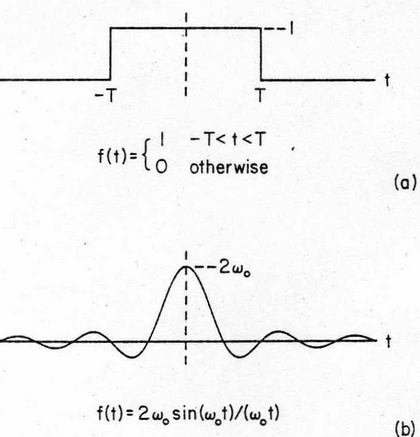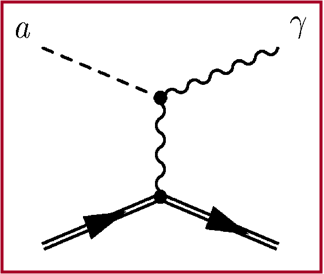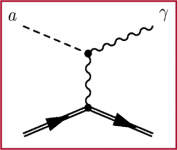A photon travels at its vacuum speed c between encountering the molecules when it travels through an optically denser medium.I get a proton (sic) slowing down when it hits a transition into a denser medium.
Why does it speed up again when it exits? Is there a force of some kind it carries within it, or is directing its motion?
When a photon encounters a molecule of the medium, it is absorbed, gives its energy to the molecule and 'stops' inside for a time. It is then re-emitted from the molecule at a speed c until it encounters another molecule.
So the photon speed never changes from c, but the transit time through the medium is extended, making it seem like the photon has slowed down while in the medium.
The photon does not speed up on leaving the medium, it merely continues on its way, unimpeded, with speed c.
Last edited:
It takes a million yrs (IIRC) for a photon generated in the sun's core to be emitted at the surface as visible light.
I get a proton slowing down when it hits a transition into a denser medium. Sort of.
Why does it speed up again when it exits? Is there a force of some kind it carries within it, or is directing its motion? Is there a transition in speed between go and stop, and stop and go?
Mind melting, again.
I think that phenomenen is well enough understood. Used everyday in camera lenses, refractive index:
"If you think you understand quantum mechanics, you don't understand quantum mechanics." - Richard Feynmann
He famously said that the key to understanding everything was the dual slit experiment.
'Ahh! I get get it! Hmm Hang on a minute. Oh. Now I wasn't expecting that! How can that be?'
One of my better carefully constructed physics jokes, IMO. Nobody got it... 🙄
All this Space-Time pondering leads to the Klein-Gordon equation, which is a wondrous thing even if replaced by proper Quantum Field Theory these days.
Klein–Gordon equation - Wikipedia
I think I'll stop there. 😀
Hmmm, seems quantum effects is the major cause of undesired lobing, seems best to avoid quantum related stuff for Audio. 😎
Lobing isn't particularly a quantum effect, of course. It's a wave property in classical mechanics too:
If you've been round the block in engineering, this is one of the great diagrams. The Sinc Function. It describes how confining some thing in one variable extends it in another. Built into Nature. Could be a lens, a loudspeaker, an antenna aperture or a slit with light going through it.

I have done a bit more on the Klein–Gordon equation - Wikipedia. Considered a bit limited because it really only works with Spin 0 particles, and apart from the twin quark Pion, there aren't many.
Until now! We can add the Higgs and the Dark Matter candidate the Axion.
Quanta Magazine
Kept me awake last night worrying about it. That and the brilliant cricket game in Australia. 😱
If you've been round the block in engineering, this is one of the great diagrams. The Sinc Function. It describes how confining some thing in one variable extends it in another. Built into Nature. Could be a lens, a loudspeaker, an antenna aperture or a slit with light going through it.
I have done a bit more on the Klein–Gordon equation - Wikipedia. Considered a bit limited because it really only works with Spin 0 particles, and apart from the twin quark Pion, there aren't many.
Until now! We can add the Higgs and the Dark Matter candidate the Axion.
Quanta Magazine
Kept me awake last night worrying about it. That and the brilliant cricket game in Australia. 😱
...the Dark Matter candidate the Axion. Quanta Magazine
:fill(ffffff)/http://static.ph.zalora.net/p/axion-1344-9312161-1.jpg)
Axion - a clean solution to the dark matter problem? 😀
I thought Higglet was a more appealing name for the Axion. Then subsequent particles would then be piglets, twiglets and chiglets.
The Boffins seem to be quite serious about finding this little thing:
CERN Axion Solar Telescope - Wikipedia
The planned successor, IAXO looks extremely menacing:

Physics | iaxo.web.cern.ch
All a wild goose chase probably. 😀
The Boffins seem to be quite serious about finding this little thing:
CERN Axion Solar Telescope - Wikipedia
The planned successor, IAXO looks extremely menacing:

Physics | iaxo.web.cern.ch
All a wild goose chase probably. 😀
Well, they HAVE been chasing the axion for 18 years now! 😉
The attached Feynman diagram represents the process of the conversion of an axion (dashed line on the left) into a photon (wavy line on the right) in the presence of an electromagnetic field (the wavy line going downwards).The experiment, sited at CERN in Switzerland, came online in 2002 with the first data-taking run starting in May 2003.
Attachments
Breaking news on axions! Astrophysicists May Have Found Evidence of Long-Sought Axions | Astronomy, Physics | Sci-News.com
I thought that was interesting. Bit tentative though. But Neutron stars are considered a promising place to look.
Looks like these tiny things weakly twist the plane of polarization in Maxwell's Equations by adding a small term. Especially with Magnetism. Hence the photon/axion connection. Probably described by the Klein-Gordon equation being spinless.
All totally baffling, but I've enjoyed looking into them. And if Wilczek and Weinberg take them seriously, so should we. Top Quantum Field Theory people.
Quanta Magazine
Obviously in my ignorance. I'm assuming they change when propagating a magnetic field. Here is an interesting discussion I came across, little of which I am able to graspYour skin certainly warms up as it absorbs infrared photons, Pete.
I am interested in the mechanism you mentioned by which photons turn into virtual photons. Can you supply more information?
https://van.physics.illinoise.edu/qa/listing.php?id=414
So what does the molecule do with the photon while in it's possession?
Sorry, I can't seem to make that link work. illinois is mispelled but it doesn't work otherwise either.
Last edited:
I think you may have been confused into thinking that real photons can turn into virtual photons.
A real photon is like a nice regular ripple in the electromagnetic field that can travel smoothly and effortlessly through space.
A virtual photon is like a disturbance in the electromagnetic field that only appears when charged particles interact with each other, and will never be found on its own.
The force that the charged particles exert on each other is generated by this disturbance.
A real photon is like a nice regular ripple in the electromagnetic field that can travel smoothly and effortlessly through space.
A virtual photon is like a disturbance in the electromagnetic field that only appears when charged particles interact with each other, and will never be found on its own.
The force that the charged particles exert on each other is generated by this disturbance.
The molecule or atom stores the energy of the photon in its electron structure.So what does the molecule do with the photon while in it's possession?
If the energy of a photon matches the difference in two energy levels within the electron structure of the atom, then an electron will absorb the energy of the photon by jumping from a low energy level to a higher energy level.
When the electron subsequently falls back down to the lower energy level, a photon is re-emitted.
If we can stay on-topic for a few posts, I think virtual particles could be interesting:
Virtual particle - Wikipedia
Electromagnetic field - Wikipedia

If I follow, this Feynman diagram is of a magnet producing a strong magnetic field at the bottom, thus the upward virtual photon. Which is hit by an axion coming in from top left producing a real photon top right.
Electric and magnetic fields are the same thing viewed from different frames of reference.
This is quantum field theory. Not something I know much about. More familiar with Classical Maxwell's Equations. But I always thought virtual particles were negative energy solutions to the field. They borrow energy for a short time to exist before disappearing again.
The lifetime of real particles is typically vastly longer than the lifetime of the virtual particles. Electromagnetic radiation consists of real photons which may travel light years between the emitter and absorber, but (Coulombic) electrostatic attraction and repulsion is a relatively short-range force that is a consequence of the exchange of virtual photons.
Virtual particle - Wikipedia
Electromagnetic field - Wikipedia
If I follow, this Feynman diagram is of a magnet producing a strong magnetic field at the bottom, thus the upward virtual photon. Which is hit by an axion coming in from top left producing a real photon top right.
Electric and magnetic fields are the same thing viewed from different frames of reference.
This is quantum field theory. Not something I know much about. More familiar with Classical Maxwell's Equations. But I always thought virtual particles were negative energy solutions to the field. They borrow energy for a short time to exist before disappearing again.
So what is this "disturbance" made up of? The link I tried to insert was a discussion about this exact question. There was no satisfactory answer. The suggestion was that a magnetic field is actually the action of spacetime warping.
I hope I have fixed your link here, Pete:
Q & A: Magnetic field is made of photons | Department of Physics | University of Illinois at Urbana-Champaign
Quite a confusing read. Seemed to be conflicting ideas there.
Q & A: Magnetic field is made of photons | Department of Physics | University of Illinois at Urbana-Champaign
Quite a confusing read. Seemed to be conflicting ideas there.
You can't expect a simple answer to that question in terms of everyday concepts that you or I could readily understand. The actual answer lies in the realm of complex mathematics.So what is this "disturbance" made up of?
The same equations of quantum fields that tell us about photons also tell us about how these disturbances work.
We simply call them 'virtual photons' to make them easier to relate to and to talk about, although it makes them sound more particle-like than they actually are.
- Status
- Not open for further replies.
- Home
- Member Areas
- The Lounge
- What is the Universe expanding into..

